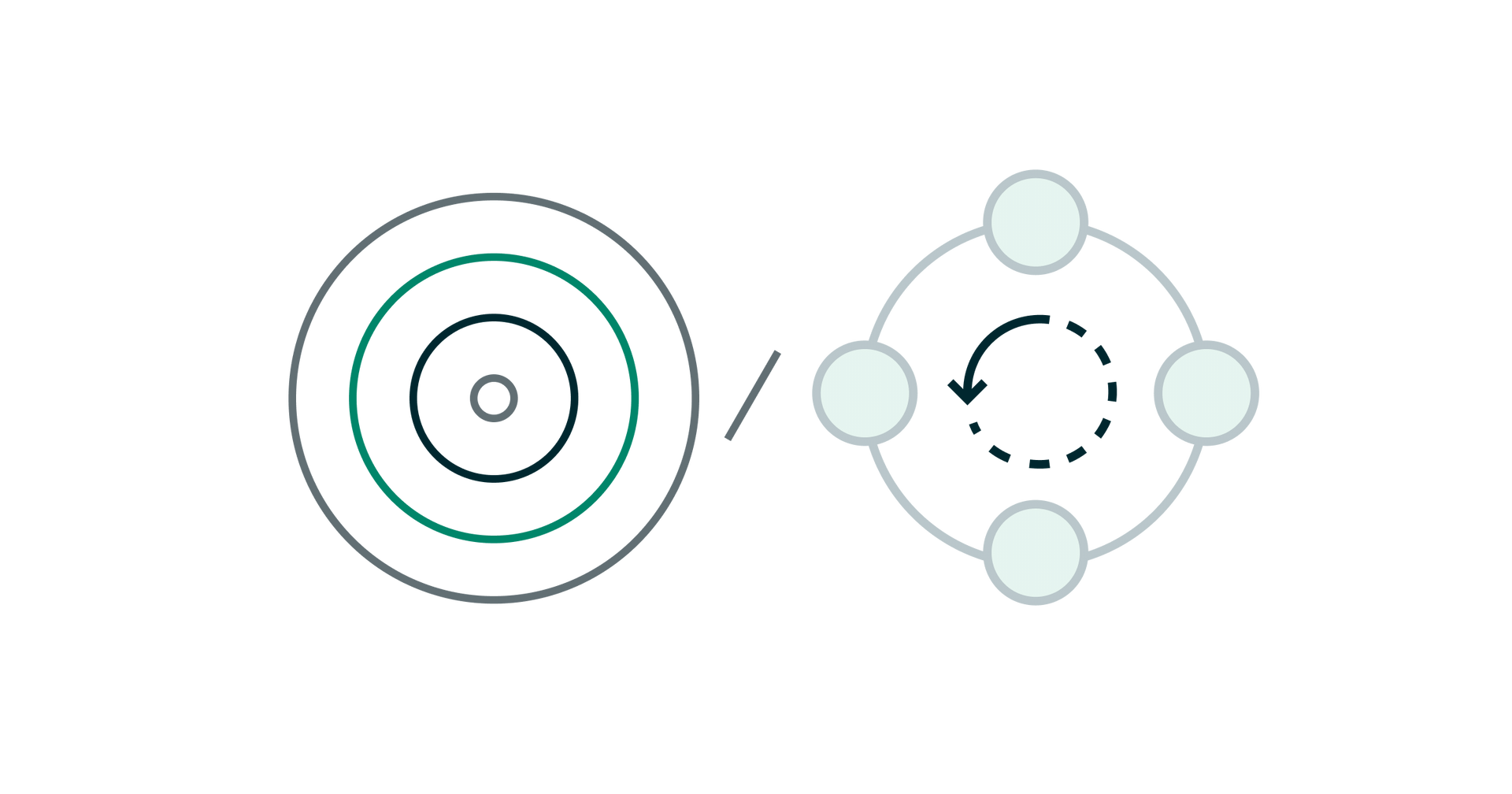The right goal-setting system is your secret weapon for success — one that improves your organization’s alignment, productivity, and adaptability.
Yet, with plenty of goal-setting frameworks to invest in, it’s easy to get lost in finding the best for your organization. Don't worry — we’ve got you covered.
In this article, we’ll compare two popular approaches to achieving your goals: objectives and key results (OKRs) and the four disciplines of execution (4DX). For a complete deep dive into OKR vs. 4DX, we’ll explore:
- What the 4DX framework is
- What OKRs are
- An example of OKR vs. 4DX
- OKR vs. 4DX: Differences and similarities
- How to choose: OKR vs. 4DX
What is 4DX in business?
Before diving into OKR vs. 4DX, we must understand these two frameworks separately. Let's first define what is 4DX in business and define the 4DX principles.
The 4DX framework is an approach your business can use to execute its most important strategic goals. First outlined by Sean Corvey, Chris McChesney, and Jim Huling in their book The 4 Disciplines of Execution: Achieving Your Wildly Important Goals, the 4DX framework covers four disciplines:
- Focus on the wildly important
- Act on the lead measures
- Keep a compelling scoreboard
- Create a cadence of accountability
Let’s take a closer look at each of these.
What are the 4 disciplines of execution?
Discipline 1: Focus on the wildly important
For the first 4DX discipline, the authors focus on three or less wildly important goals (WIGs) for the best results. Now we know you’re thinking, “Great, another acronym,” but it’s important.
Beyond limiting the number of business goals, focusing on WIGs entails a few additional rules:
- Streamlining: Lower-level goals should directly contribute to higher-level goals
- Ownership: Lower-level leaders must have a say in their teams’ WIGs, as opposed to being dictated by senior leaders
- Vision: WIGs must have a finish line defined by where you are today and where you want to go — written in the form of “X to Y by When”
Discipline 2: Act on the lead measures
This 4DX discipline highlights the importance of focusing on activities that lead to goal success, requiring you to understand lag and lead measures.
- Lag measures: Track whether you’ve achieved your goals
- Lead measures: Activities that contribute to goal achievement
For example, how often your car breaks down would be a lag measure, whereas the number of times it’s received routine maintenance would be a lead measure. In short, you can’t really control lag measures, so focusing on lead measures is how to increase your chances of achieving your goals.
Discipline 3: Keep a compelling scoreboard
The third discipline of 4DX is ensuring everyone can see their progress and performance at any time. This is achieved using a visual scoreboard that displays up-to-date lead and lag measures. Keep engagement high with simple, complete, and intuitive scoreboards.
Discipline 4: Create a cadence of accountability
The first three 4DX disciplines provide focus, clarity, and engagement, while the fourth is the engine driving goal attainment — facilitating accountability. With the 4DX framework, creating a cadence of accountability involves short, weekly WIG sessions covering:
- Account: Reporting on last week’s commitments
- Review: Learning from your lag and lead measures
- Plan: Make new, updated commitments for the week ahead
Now that we’ve covered the 4DX principles and can comprehend the 4DX business model, let’s move on to OKRs.
What are OKRs?
The OKR framework is a goal-setting methodology created by Intel’s Andy Grove to help set measurable, ambitious, and collaborative goals. OKRs achieve this using two key components — objectives and key results.
- Objectives: Short, qualitative statements of what you’re looking to achieve
- Key results: 3-5 metrics that progress your objectives
To simplify the OKR writing process, you can use the following formula:

Like 4DX, there’s a multi-step process to implementing OKRs. However, these take a more flexible approach, as you can continuously adjust the OKR cycle to adapt to the needs of your business and industry.
Typically, most businesses stick to annual and quarterly OKR cycles. For instance, a quarterly OKR goal-setting process may look like:
- 4-6 weeks before the quarter: The OKR implementation process is outlined, with high-level OKRs planned and roles assigned
- 2 weeks before the quarter: Top-level OKRs are shared with the organization, encouraging lower-level team OKRs that align with the big picture
- During the quarter: OKRs are managed and measured throughout the quarter with weekly check-ins and confidence assessments
- 1-3 weeks before the end of the quarter: An OKR retrospective is held to see what worked and what didn’t, encouraging a feedback loop to improve upcoming OKR cycles
Want an in-depth breakdown of OKR cycles? See our step-by-step guide to choosing an OKR cycle

OKR vs. 4DX: Differences and similarities
To compare OKR vs. 4DX, we can look at the qualities OKR and 4DX share, as well as how they differ. To help you figure out whether implementing OKR vs. 4DX is best for your business, we’ll compare their critical differences and similarities.
Similarities between OKRs and 4DX
- A limited number of goals: Ensure everyone has focused goals instead of wasting resources on disconnected objectives
- Measurable goals: Involve goals that are measured and tracked using key metrics
- Goal alignment: Encourage teams to set bottom-up and top-down goals, ensuring they contribute to higher objectives
- Regular check-ins: Include ongoing progress tracking, engaging teams along a unified path
- Continuous improvement: Emphasize learning and feedback, centering meetings on how to make continuous improvement
Differences between OKRs and 4DX
- Scope: OKRs rely on objectives and key results for successful strategy execution, whereas the 4DX framework uses a 4-step process of focus, leverage, engagement, and accountability to set and track goals
- Tracking progress: OKRs use key results to oversee progress, while 4DX uses a visual scoreboard that highlights leading and lagging measures
- Flexibility: OKRs can be adjusted as needed, while the 4DX business model is more prescriptive, clearly emphasizing the steps that need to be taken
- Cadence: OKRs focus on setting, reviewing, and updating long-term goals every quarter, while 4DX functions on weekly goal progress
An example of OKR vs. 4DX
To understand how OKR vs. 4DX plays out in a real-world scenario, let’s look at it in a sales context — a sales team’s goal is to increase sales by 20% over the coming quarter.
OKRs
If a sales team structured this goal with OKRs, it might be formatted this way:
- Objective: Skyrocket sales
- Key Result #1: Upsell our product to 20% of customers
- Key Result #2: Increase our lead-to-customer conversion rate by 10%
- Key result #3: Increase the average deal size by 15%
4DX
Conversely, with the 4DX framework, a sales team may structure the same goal like this:
- Discipline 1: Define the WIG for the sales department in the form of “X to Y by When” (i.e., Grow sales from $320,000 to $384,000 by the end of Q2)
- Discipline 2: Create a scorecard for visibility into the WIG’s progress
- Discipline 3: Establish lead and lag measures for the WIG — in this case, a lag measure may be revenue generated, whereas the number of qualified leads can act as a lead measure
- Discipline 4: Hold weekly, 20-minute meetings discussing progress, feedback, and next week’s commitments
How to choose: OKR vs. 4DX
Understanding whether OKR vs. 4DX is best for your business, you need to assess your business’s internal and external environment. This involves a closer look at your industry, structure, strategy, complexity, and resources.
Why OKRs may be a better fit
- You’re in a fast-paced industry: Given the flexibility OKRs offer — compared to the strict approach of the 4DX framework — you can quickly shift priorities, goals, and metrics to suit organizational needs
- You’re unsure of how to make your strategy work: OKRs help you bridge the gap between your strategy and execution by aligning goals to support teams and the organization as a whole
- You have hybrid or remote teams: While 4DX’s WIG meetings often require in-person and real-time interactions, implementing and tracking OKRs remotely is simple — especially with dedicated OKR software in place
Why 4DX may be a better fit
- Your organization is hierarchical: The 4DX business model provides a solid, step-by-step process for goal setting, progress tracking, and accountability, which may be best for hierarchical organizations
- You’re focused on short-term initiatives: Given that long-term goals aren’t a primary focus of 4DX, this framework is better suited for organizations working toward short-term goals, tactical projects, or sprints
- Your business operates in a physical location: The 4DX framework is meant for teams or organizations working in person — ones that can have regular face-to-face interactions to create clarity
OKR vs. 4DX: The bottom line
When assessing OKR vs. 4DX — and their viability for your organization — it’s all about how well they serve your unique business requirements. While both OKRs and 4DX can help you achieve your goals in a data-driven and aligned way, their crucial difference lies in their flexibility.
Unlike the prescriptive nature of the 4DX framework, OKRs are adaptable to the needs of your business — especially when it comes to cadence and hybrid or remote working.
When trying to decide between OKR vs. 4DX, you need to account for our ever-changing world. Given the continuous flexibility businesses must have to adapt to our dynamic environment, OKRs may be the optimal solution for future-proofing your business and thriving amidst ongoing business challenges.
Quantive empowers modern organizations to turn their ambitions into reality through strategic agility. It's where strategy, teams, and data come together to drive effective decision-making, streamline execution, and maximize performance.
As your company navigates today’s competitive landscape, you need an Always-On Strategy to continuously bridge the gap between current and desired business outcomes. Quantive brings together the technology, expertise, and passion to transform your strategy from a static plan to a feedback-driven engine for growth.
Whether you’re a visionary start-up, a mid-market business looking to conquer, or a large enterprise facing disruption, Quantive keeps you ahead — every step of the way. For more information, visit www.quantive.com.

